Prices in AUD. Shipping worldwide. Flat rate $8 postage per order within Australia. International by weight calculated at checkout. Read full terms.
-
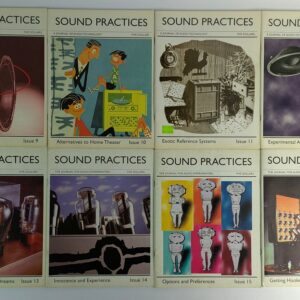
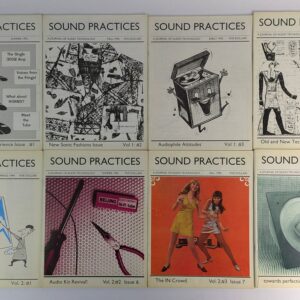
Sound Practices: A Journal of Audio Technology
AU$550.00 Read MoreAdd to cartJoe Roberts
Alexandria and Austin: Sound Practices, 1992-1997.A complete run in 16 issues of the audiophile journal Sound Practices edited by Joe Roberts. “…hands-down the hippest and most controversial hi-fi ‘zine, reverses the common belief that the hi-fi gear of the ’30s, ’40s, and ’50s sucked and that modern components sound superior. This mag argues just the reverse: that ever since the gritty transistor replaced the smooth-sounding tube, the sound of hi-fi systems has steadily gotten worse instead of better. .. Lest you think that a bunch of guys into ’30s retro-tech are old freaks, the Sound Practices mob is made up of swashbuckling techno-anarchists who range from members of the avant-garde NY art scene to many of the most well-respected minds in international hi-fi. And the articles range from the highly technical to wildly imaginative think pieces.” (Wired, 1st December 1994)
-
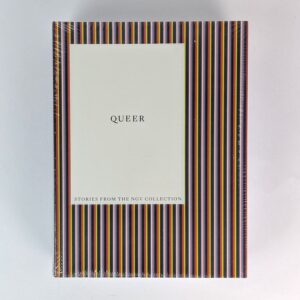
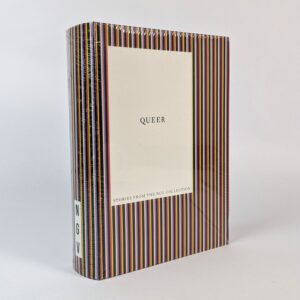
Queer: Stories from the NGV Collection
AU$500.00 Read MoreAdd to cartTed Gott; Angela Hesson; Myles Russell-Cook; Pip Wallis; Meg Slater
Melbourne: Council of Trustees of the National Gallery of Victoria, 2022.“Queer: Stories from the NGV Collection is more than an exhibition catalogue. This 628-page publication expands on the themes explored in the NGV’s Queer exhibition to document the queer past, present and future of the NGV collection. More than 60 essays from authors with comprehensive knowledge of the historical and contemporary subjects encompassed by the NGV’s Queer project are presented alongside stunning reproductions of more than 200 works from the NGV collection, either by queer artists or engaging with queer issues. The essays in Queer: Stories from the NGV Collection explore the history of LGBTQ+ activism; the creation of queer spaces and communities; queerness as an artistic strategy; the expression of love, desire and sensuality; queer aesthetics; and the concepts of camp and the fantastic.” (publisher’s blurb) This extensive monograph catalogue sold out in the year of publication and has not been reprinted.
-
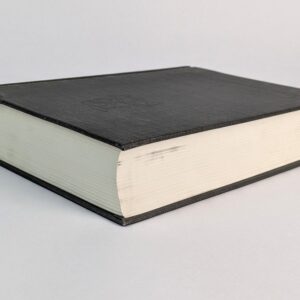
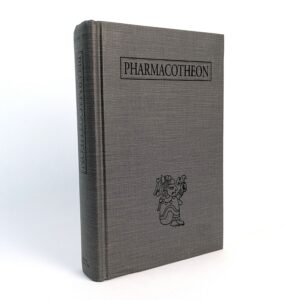
Pharmacotheon: Entheogenic Drugs, Their Plant Sources and History
AU$400.00 Read MoreAdd to cartJonathan Ott
Kennewick: Natural Products Co., 1993.A comprehensive multidisciplinary reference book on shamanic inebriants and their active agents. Foreword by Albert Hofmann. An unsigned copy of the limited hardbound edition.
-
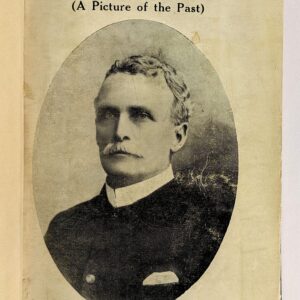
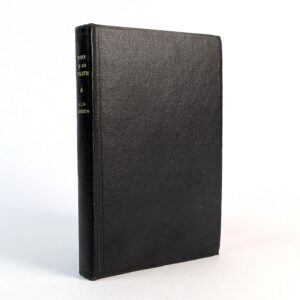
The Story of an Athlete (A Picture of the Past)
AU$650.00 Read MoreAdd to cartH. C. A. Harrison
Melbourne: Alexander McCubbin, No date.Autobiography of one of the pioneers of Australian rules football, AFL.
-
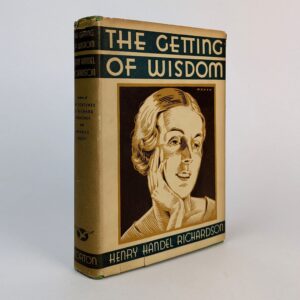
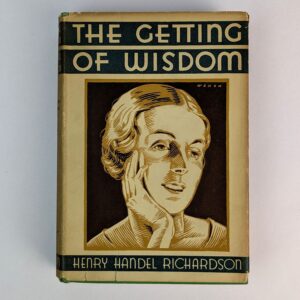
The Getting of Wisdom
AU$500.00 Read MoreAdd to cartHenry Handel Richardson
New York: W. W. Norton & Company, 1931.First published in 1910, this is the first US printing of the 1931 revised edition of Ethel Florence Lindesay Richardson’s Australian coming of age novel set in an 1890s Melbourne all-girls boarding school. In the original jacket illustrated by Paul Wenck.
-


Brave New World
Read MoreSOLDAldous Huxley
London: Chatto & Windus, 1932.First edition, first printing of Huxley’s dystopian classic. BROMER A29.3.1. This copy rebound in fine full blue leather.
-
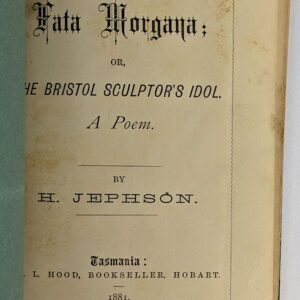
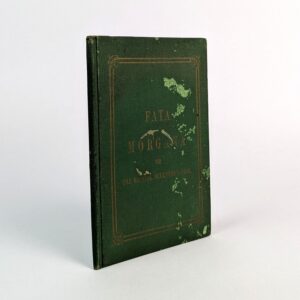
Fata Morgana; or, The Bristol Sculptor’s Idol, A Poem.
AU$500.00 Read MoreAdd to cartH. Jephson
Hobart: T. L. Hood, 1881.Early Tasmanian poetry. The story, in narrative verse, of a genius contending with poverty. Henry Jephson (1810-1896) emigrated from England to Hobart in 1857 becoming associated with the Methodist Free Church and joining the Tasmania Operative Lodge of Masons for which Jephson composed Masonic Songs. The preface of this work is written by Rev. R. D. Poulett-Harris, who became the first Grand Master of the Grand Lodge of Tasmania in 1890.
-
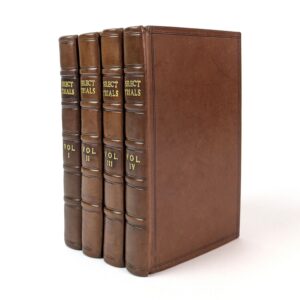
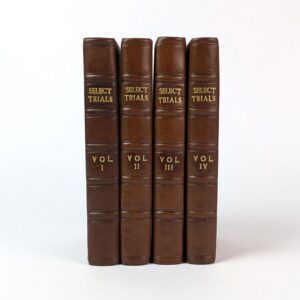
Select Trials at the Sessions-House in the Old-Bailey, for Murder, Robberies, Rapes, Sodomy, Coining, Frauds, Bigamy, and other Offences.
AU$2,000.00 Read MoreAdd to cartNo author
London: John Applebee for George Strahan, et al., 1742.To which are added, Genuine Accounts of the Lives, Behaviour, Confessions and Dying Speeches of the most eminent Convicts. Rare complete set of this collection of 18th century British crimes with explicit descriptions of crimes, trials, and punishments. Therein are numerous accounts of sodomy including that the case of one of the most famous of London’s gay meeting spots of the time, Clap’s molly house, being the coffee house of Margaret Clap AKA Mother Clap. “Margaret Clap, for keeping a Sodomitical House, July, 1726. MARGARET CLAP was indicted for keeping a disorderly house, in which she procured and encouraged Persons to commit Sodomy, December 10, 1725, and before and after. Samuel Stevens. On Sunday Night, the 14th of November last, I went ot the Prisoner’s House in Field-lane, in Holburn, where I found between 40 and 50 Men making Love to one another, as they call’d it. Sometimes they would sit in one another’s Laps, kissing in a lewd Manner and using their Hand indecently. Then they would get up, Dance and make Curtsies, and mimick the Voices of Women. ‘ I, Fie, Sir ! – Pray, Sir, – Dear, Sir, – Lord, how can you serve me so? – I swear I’ll cry out. – You’re a wicked Devil, – and your’e a bold Face. – Eh ! ye little dear Toad ! Come, buss ! -‘ Then they’d hug, and play, and toy, and go out by Couples into another Room on the same Floor, to be married, as they call’d it…” (vol. III, pp. 37) and so on and so forth are similar and many other crimes told, such as the murderer Sarah Malcolm (who was sketched by Hogarth), Catherine Hayes and her accomplices, the murderer poet Richard Savage (as described in Samuel Johnson’s Life of Savage), the thief John Jack Sheppard, and the sodomy trial of Charles Hitchen.
-
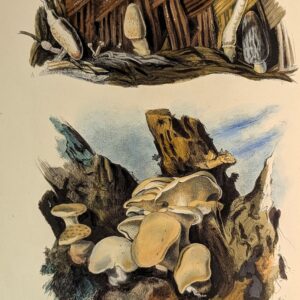
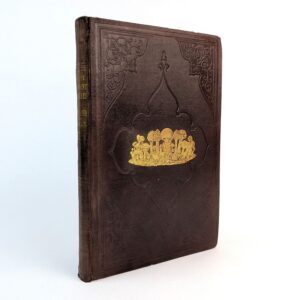
A Treatise on the Esculent Funguses of England,
AU$1,000.00 Read MoreAdd to cartCharles David Badham
London: Reeve Brothers, 1847.Containing an Account of their Classical History, Uses, Characters, Development, Structure, Nutritious properties, Modes of Cooking and Preserving, &c.,.
-
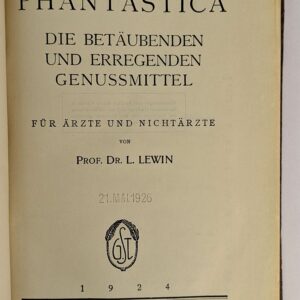

Phantastica: Die Betaubenden und Erregenden Genussmittel
AU$800.00 Read MoreAdd to cartL. Lewin
Berlin: Georg Stilke, 1924.First edition of the psychedelic classic by German pharmacologist Louis Lewin (1850-1929). Set the standard for the classification of psychoactive drugs: Inebriantia (Inebriants such as alcohol or ether), Excitantia (Stimulants such as Khat or Amphetamine), Euphorica (Euphoriants and Narcotics such as Heroin), Hypnotica (Tranquilizers such as Kava), Phantastica (Hallucinogens or Entheogens such as Peyote or Ayahuasca). Later translated into French, Italian, and English, the 1931 English edition said to be Aldous Huxley’s introduction to drug literature.
-
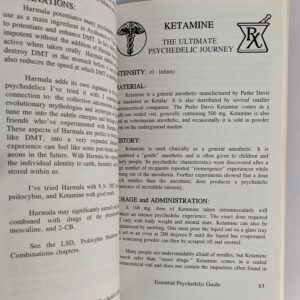
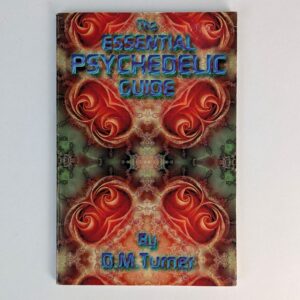
The Essential Psychedelic Guide
AU$150.00 Read MoreAdd to cartD. M. Turner
San Francisco: Panther Press, 1994.A detailed, and very drug nerdy, guide to psychedelic experimentation. An experiential view on many of the classical psychoactive substances.
-

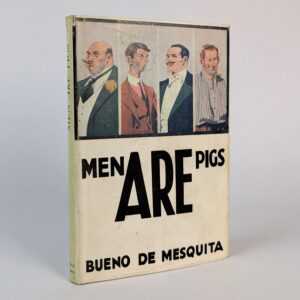
Men Are Pigs
AU$150.00 Read MoreAdd to cartBueno de Mesquita
Sydney: Cornstalk Publishing Company, 1927.A tit for tat reply to the book about women, Cats, Not by Louis Wain. The first Australian Edition, published the same year as the Cecil Palmer UK Edition.
-
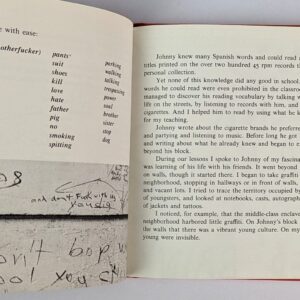
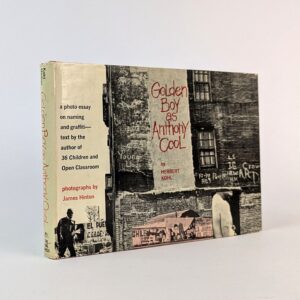
Golden Boy as Anthony Cool: A Photo Essay on Naming and Graffiti
AU$800.00 Read MoreAdd to cartHerbert Kohl; James Hinton
New York: The Dial Press, 1972.Important early study of urban text graffiti and tagging in New York. More than just a photobook, though Hinton’s work definitely gives it that distinction, Kohl, founder of the 1960s Open School movement, provides lengthy and invaluable insight into language and identity.
-
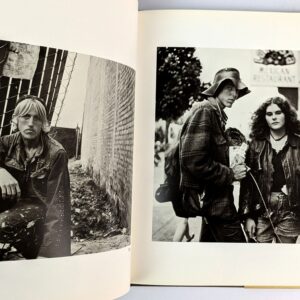
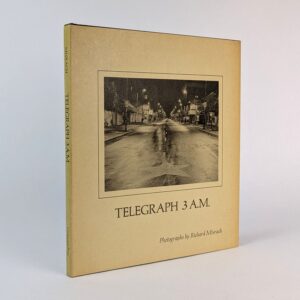
Telegraph 3 A.M.: The Street People of Telegraph Avenue, Berkeley, California
AU$400.00 Read MoreAdd to cartRichard Misrach
Berkeley: Cornucopia Press, 1974.First photobook of American photographer Richard Misrach (1949-), being street photography of the homeless residents of Telegraph Avenue in Berkeley, California.
-
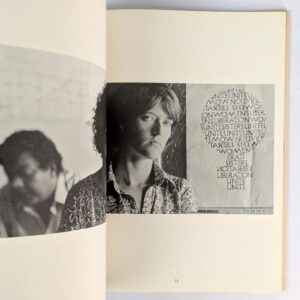
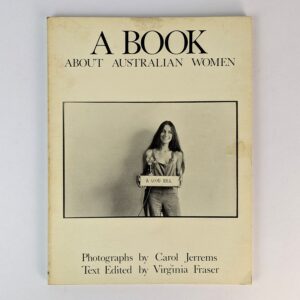
A Book About Australian Women
AU$1,000.00 Read MoreAdd to cartCarol Jerrems; Virginia Fraser
Melbourne: Outback Press, 1974.Classic Australian photobook. “A book about Australian women was published on the eve of International Women’s Year and following the establishment of the Office for Women’s Affairs by the Whitlam government in 1973. The book, described as a ‘collective portrait’, featured interviews by writer and artist Virginia Fraser, along with 131 photographs by Carol Jerrems of women from various walks of life. Some, such as Wendy Saddington, were already well known; others, such as Anne Summers, subsequently became prominent in their fields.” (National Portrait Gallery website)
-

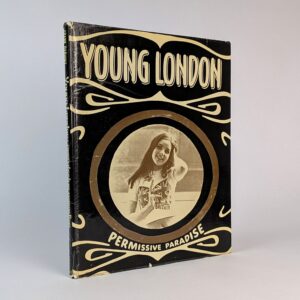
Young London: Permissive Paradise
AU$400.00 Read MoreAdd to cartFrank Habicht; Heather Cremonesi; Robert Bruce
London: George G. Harrap, 1969.Classic street photography photobook of 1960s London youth.
-
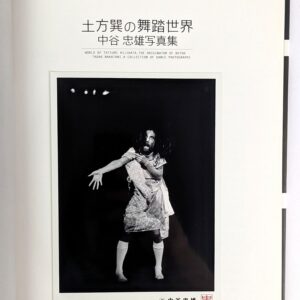
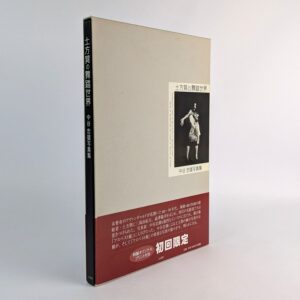
World of Tatsumi Hijikata, the Originator of Butoh: A Collection of Dance Photographs
AU$200.00 Read MoreAdd to cartTadao Nakatani
Tokyo: Shinsensha, 2003.Photographic record of Japanese dancer and co-founder of Butoh, Hijikata Tatsumi. Includes performances from the late 1960s to early 1970s as well as dancers from his Asbestos Studio.
-

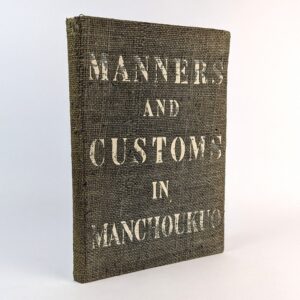
Manners and Customs in Manchoukuo
AU$2,000.00 Read MoreAdd to cartMasatoshi Kobayashi; Noboru Hidaka
Manchoukuo: The Manchuria Daily News, 1942.A detailed and thoroughly illustrated guide in English to life and culture in Manchuria. Published at the height of WWII, depicting a completely normal world inside the Japanese puppet state with chapters on races and tribes, costumes, residential houses, food and drink, salutation and etiquette, tastes and pastimes, annual festivals, religions, symbols of religious faith, and happy and unhappy affairs.
-
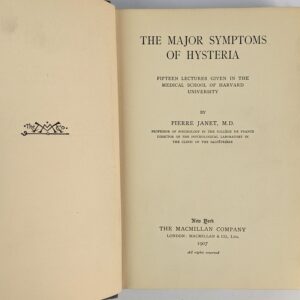
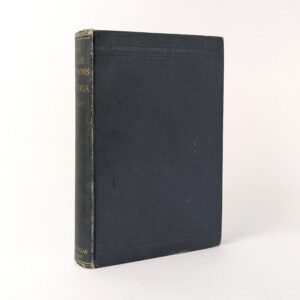
The Major Symptoms of Hysteria: Fifteen Lectures Given in the Medical School of Harvard University
AU$500.00 Read MoreAdd to cartPierre Janet
New York: Macmillan, 1907.First publication of a series of lectures given by pioneering French psychologist Pierre Janet (1859-1947) in the United States in 1906 on the occasion of the inauguration of the new Medical School buildings at Harvard. Janet also presented some of the lectures at John Hopkins and Columbia. Highly influential and ranked as one of the founding fathers of psychology, Janet rarely published in English, these lectures being one of the few occasions.
-
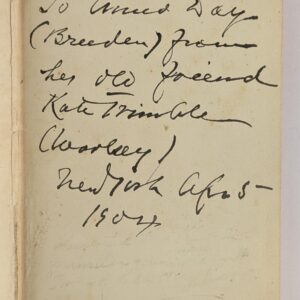
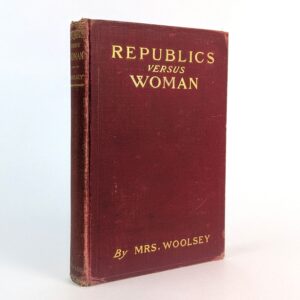
Republics versus Woman: Contrasting the treatment according to women in Aristocracies with that meted out to her in Democracies
AU$250.00 Read MoreAdd to cartMrs. Woolsey
New York: The Grafton Press, 1903.Theory of American suffragist Kate Trimble Woolsey (1858-1936) that women fare better under the monarchies and aristocracies of Europe than republics such as the United States. Woolsey regularly traveled between Europe and the US on behalf of women’s rights. This copy inscribed by Woolsey to the front free endpaper in ink, some pencil text in the margin below the inscription now illegible.
